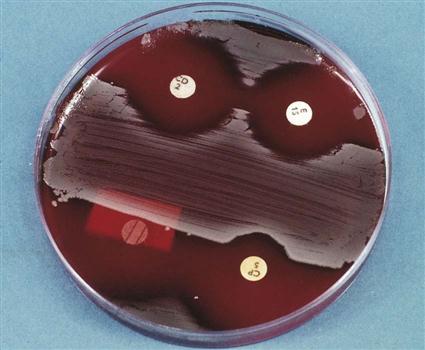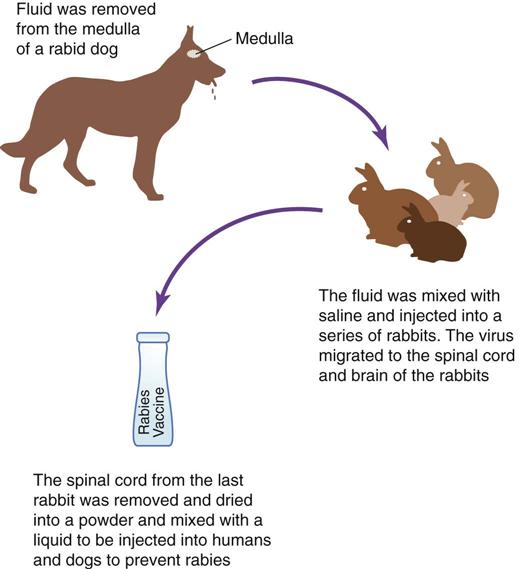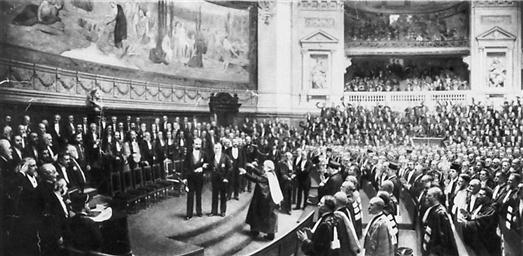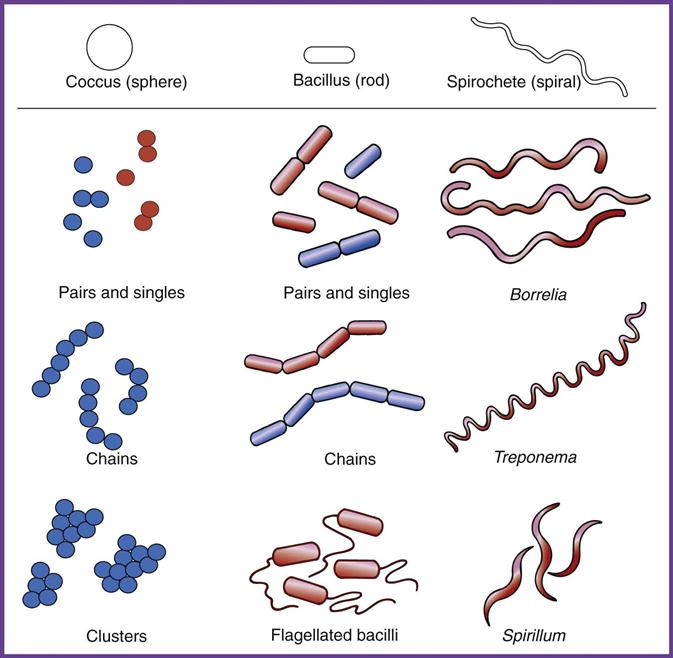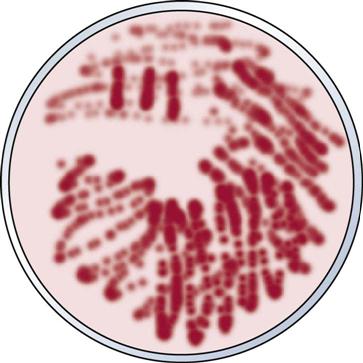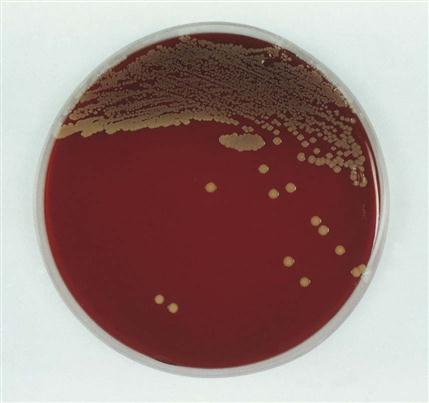Microbiology
Learning Outcomes
On completion of this chapter, the student will be able to achieve the following objectives:
• Pronounce, define, and spell the Key Terms.
• Discuss the contributions of early pioneers in microbiology.
• Explain why the study of microbiology is important for the dental assistant.
• Identify the types of bacteria according to their shape.
• List the major groups of microorganisms.
• Describe the differences among aerobes, anaerobes, and facultative anaerobes.
• Identify the method of transmission of methicillin-resistant Staphylococcus aureus (MRSA).
• Identify the most resistant form of life known, and explain how it survives.
• Compare viruses with bacteria, and name diseases caused by each.
• Explain why specificity in viruses is important.
• Describe how prions differ from viruses and bacteria.
• Name the blood-borne pathogens of concern in dentistry.
• Name two diseases caused by prions.
• Describe the symptoms of influenza.
• Describe the possible effects of a pandemic.
• Describe the symptoms of West Nile virus.
• Explain how the H1N1 virus is spread.
• Explain how each type of hepatitis is transmitted.
• Describe the effects of HIV on the immune system.
• Identify methods of HIV transmission.
• Describe the characteristics of methicillin-resistant Staphylococcus aureus (MRSA).
Electronic Resources
![]() Additional information related to content in Chapter 18 can be found on the companion Evolve Web site.
Additional information related to content in Chapter 18 can be found on the companion Evolve Web site.
Key Terms
Aerobes (AYR-oebz) Bacteria that require oxygen to grow.
Anaerobes (AN-uh-roebz) Bacteria that grow in the absence of oxygen and are destroyed by oxygen.
Bacilli (singular, bacillus) Rod-shaped bacteria that cause tuberculosis and other diseases.
Chancre A painless ulcerating sore.
Cocci (singular, coccus) Spherical bacterial cells that reproduce by dividing into two.
Creutzfeldt-Jakob (KROITS-felt YAH-koeb) disease Rare chronic brain disease with onset in middle to late life (40 to 60 years).
Endospores A resistant, dormant structure formed inside of some bacteria that can withstand adverse conditions.
Facultative anaerobes Organisms that can grow with or without oxygen.
Fungi (singular, fungus) Plants, such as mushrooms, yeasts, and molds, that lack chlorophyll.
Gram negative Classification of bacteria that do not hold a dye stain under a microscope.
Gram positive Classification of bacteria that hold a dye stain and appear dark purple under a microscope.
Gram variable Classification of bacteria that are not consistently stained.
Gram’s stain Four-step staining process developed by Hans Christian Gram and used to separate bacteria into groups.
H1N1 A form of swine influenza virus.
Latent Dormant.
Microbiology The study of microorganisms.
Methicillin-resistant Staphylococcus aureus Type of staph infection that is resistant to several common antibiotics
Nonpathogenic (non-path-oe-JEN-ik) Pertaining to microorganisms that do not produce disease.
Oral candidiasis (kan-di-DYE-uh-sis) Candida yeast infection of the oral mucosa.
Pandemic (pan-DEM-ik) A condition that occurs throughout the people of a country or the world.
Pathogens (PATH-uh-jenz) Disease-producing microorganisms.
Percutaneous (pur-kyoo-TAY-nee-us) Through the skin, such as a needle stick, a cut, or a human bite.
Prions (PRYE-ons) Infectious particles of proteins that lack nucleic acids.
Protozoa (proe-toe-ZOE-uh) Single-celled microscopic animals without a rigid cell wall.
Provirus Virus that is hidden during the latency period.
Spirochetes Spiral-shaped bacteria.
Staphylococci Cocci that form irregular groups or clusters.
Streptococci Cocci that form chains as they divide.
Tyndallization (tin-duhl-i-ZAY-shun) Intermittent, or fractional, sterilization.
Virulent (VIR-yoo-lent) Capable of causing serious disease.
Viruses Ultramicroscopic infectious agents that contain DNA or RNA.
The dental assistant must acquire a foundation in microbiology to understand the nature of pathogens (disease-producing microorganisms) and ways to prevent the transmission of disease in the dental office. This knowledge helps the assistant to make important decisions regarding infection control products and procedures (see Chapter 19). It is important to note that the two most common oral diseases, dental caries (decay) and periodontal disease, are caused by bacterial infections.
Microbiology is the study of microorganisms (micro- means microscopically small, and bio- means living organisms). Because of their microscopic size, the existence of microorganisms usually goes unnoticed unless they cause illness. Most people experience common colds in the winter months, and many others experience life-threatening illnesses caused by microorganisms.
Fortunately, most microorganisms are nonpathogenic (i.e., they do not produce human illness). In fact, microorganisms are valuable allies in many ways. Microorganisms used in the production of flavorful cheeses and yogurt, for example, are particularly beneficial. Other microorganisms are used in the disposal of waste products, the fertilization of soil, and the production of lifesaving drugs.
Pioneers in Microbiology
Aristotle (384–322 BC) introduced the earliest belief that life was “spontaneously generated” from nonliving matter. This theory remained unchallenged for longer than 2000 years. According to this theory, living things arose from muck, decaying food, warm rain, or even dirty shirts.
Antony van Leeuwenhoek (LAY-vuhn-hoak) (1632–1723) was a Dutch merchant and an amateur scientist. He used a primitive microscope to observe stagnant water and scrapings from the teeth. His microscope was simple; it consisted of a small lens that was mounted between two thin plates of metal. Through the lens at about 300× magnification, van Leeuwenhoek could see small life-forms he called “animalcules.” After 20 years of careful observation, he reported his findings to the Royal Society of London.
John Tyndall (TIN-duhl) (1820–1893) was an English physicist who explained the need for prolonged heating to destroy microbial life in broth. He discovered that bacteria existed in heat-stable and heat-sensitive forms. Prolonged or intermittent heating was needed to destroy the heat-stable form. Intermittent heating, now called tyndallization, killed both forms. Almost simultaneously, German botanist Ferdinand Cohn (1828–1898) described the heat-stable forms as endospores, which are formed during the life cycle of certain bacteria (see Chapter 21).
Joseph Lister (1827–1912) was an English surgeon who recognized the role of airborne microorganisms in postsurgical infection. By applying carbolic acid to dressings and using an aerosol of carbolic acid during surgery, he lowered the risk of infection after surgery.
Robert Koch (1843–1910) was a German physician who provided the techniques and discipline necessary to guide future microbiologists. He developed a two-part dish that was used for growing bacteria and a technique used for isolating pure colonies of bacteria (Fig. 18-1). The two-part dishes were named Petri plates after Julius Petri (1852–1921), a German bacteriologist. Petri plates are still used in microbiology laboratories today.
To prove that a specific microorganism caused a particular disease, Koch applied guidelines that are still in use today.
Louis Pasteur (1822–1895) was the famous French chemist who disproved the theory of spontaneous generation of life and associated living microorganisms with disease. Pasteur designed flasks shaped like swan necks (S-shaped) for heating broths. The curved pathway caused by bends in the glass prevented dust particles, which contained microorganisms from the air, from entering the heated broth. Instead, the dust particles settled in the bends of the long-necked flasks, even over an extended period. When the top of a flask was removed, microorganisms once again appeared in the liquid. Pasteur’s experiments put an end to the theory of spontaneous generation of life.
Koch’s Postulates
• The microbial agent must be found in every case of the disease.
• The microorganism must be isolated and grown in pure culture.
• The microorganism must cause the same disease when inoculated into a susceptible animal.
• The same microbial agent must be recovered from the inoculated animal.
Pasteur’s ongoing contributions to the emerging germ theory of disease earned him the title “Father of Microbiology.” At the request of Napoleon III in 1863, Pasteur saved the French wine industry by showing that vats of spoiled wine contained acid-producing bacteria. Contaminants could be destroyed in a short time at temperatures of 50° to 60° F. The process of heating grape juice to reduce microorganisms became known as pasteurization. Today, pathogens in milk are destroyed through pasteurization.
Pasteur prepared the first vaccine for the fatal animal disease rabies. Although he never isolated the actual rabies virus, he infected rabbits by inoculating them with a preparation from the medulla (a portion of the brain stem and spinal cord) of rabid dogs. The virus migrated to the spinal cord and the brain of rabbits. Pasteur maintained the organism through successive inoculations in rabbits (Fig. 18-2). He inoculated dogs with dried, powdered rabbit medulla, suspended in broth, to prevent rabies.
The French government built the Pasteur Institute in 1888 to honor Pasteur, whose last words reportedly were, “There is still a great deal to do” (Fig. 18-3).
Major Groups of Microorganisms
The five major groups of microorganisms are (1) bacteria, (2) algae, (3) protozoa, (4) fungi, and (5) viruses. Members of the first four groups are easily recognized with the aid of a light microscope, which is used in most laboratories. Viruses, however, are so tiny that they can be seen only with a powerful electron microscope.
Viruses often have been described as “perfect parasites” because they live inside cells of the host and use the resources of the cells to produce up to 10,000 offspring as quickly as within seven hours. Today, viruses are responsible for most of the emerging microbial diseases. Cells in which invading viruses live and replicate are called host cells.
Although it is not a member of the major groups, a recently discovered infectious particle is known as a prion. Prions are unique agents in that they contain abnormal protein with no DNA or RNA (deoxyribonucleic or ribonucleic acid). Prions are responsible for a group of chronic diseases with long incubation periods (see later discussion in the section about prions).
Bacteria
Bacteria (singular, bacterium) make up a large group of one-celled microorganisms that vary in size, shape, and arrangement of cells. Most bacteria are capable of living independently under favorable environmental conditions. Pathogenic bacteria usually grow best at 98.6° F (37° C) in a moist, dark environment.
Bacterial infection can be spread through various means (see Chapter 19). Humans host a variety of bacteria at all times. The skin, respiratory tract, and gastrointestinal tract are inhabited by a great variety of harmless bacteria, called normal flora. These bacteria are beneficial and protect the human host by aiding in metabolism and preventing entrance of harmful bacteria.
Infection occurs when bacteria that occur naturally in one part of the body invade another part of the body and become harmful. When this occurs, normal florae are considered opportunistic, or causing infection. For example, the urinary tract infection called cystitis is caused by contamination with Escherichia coli, a bacterium that is found in normal flora in the intestine.
Shape
Most bacteria can be classified according to their shape. When viewed under a microscope, bacteria can be seen to have three shapes: (1) spherical (cocci), (2) rod (bacilli), and spiral (spirochetes) (Fig. 18-4).
Cocci reproduce by dividing into two. Cocci that form chains as they divide are called streptococci. Examples of infections caused by streptococci include pharyngitis (a severe sore throat commonly known as “strep throat”), tonsillitis, pneumonia, and endocarditis (Fig. 18-5). Cocci that form irregular groups or clusters are called staphylococci. Examples of infections caused by staphylococci include boils and other skin infections, endocarditis, and pneumonia (Fig. 18-6).
Bacilli (singular, bacillus) are rod-shaped bacteria. Tuberculosis is a disease that is caused by a bacillus.
Spirochetes are spiral-shaped bacteria that have flexible cell walls and are capable of movement. Lyme disease, which is transmitted to humans through the bite of an infected deer tick, is caused by a spirochete. Syphilis is also caused by a spirochete (see later discussion in the section about syphilis under />
Stay updated, free dental videos. Join our Telegram channel

VIDEdental - Online dental courses


